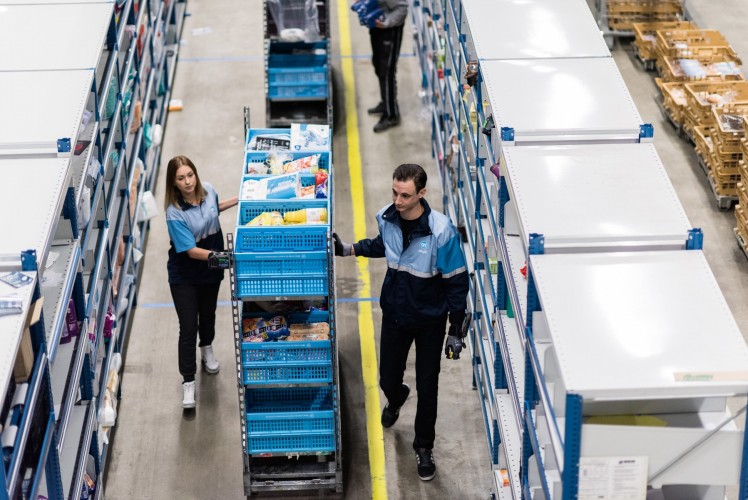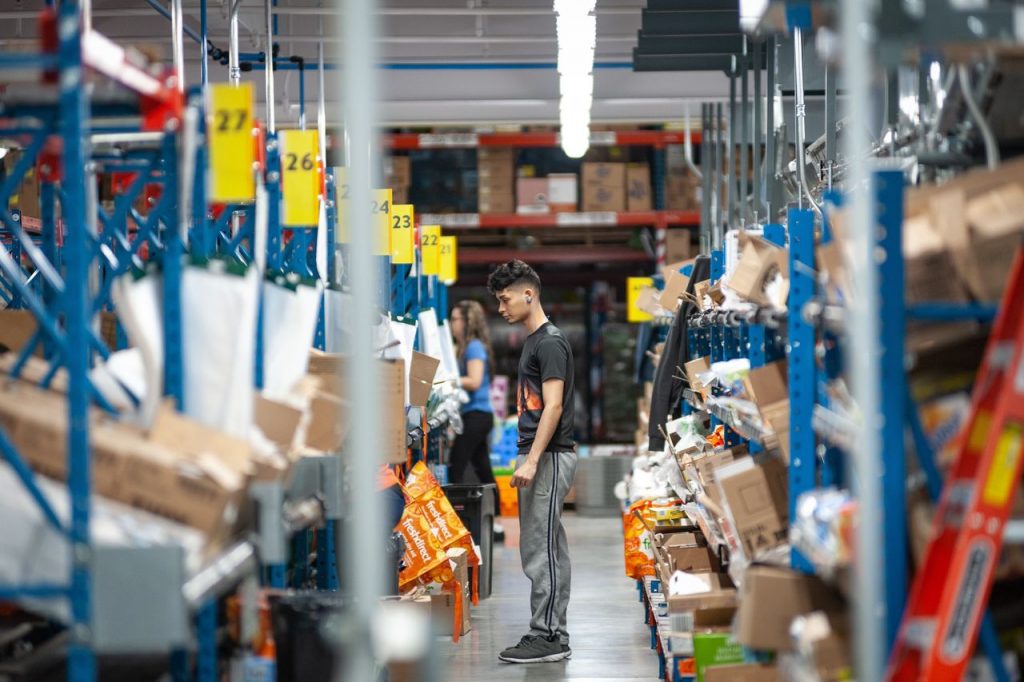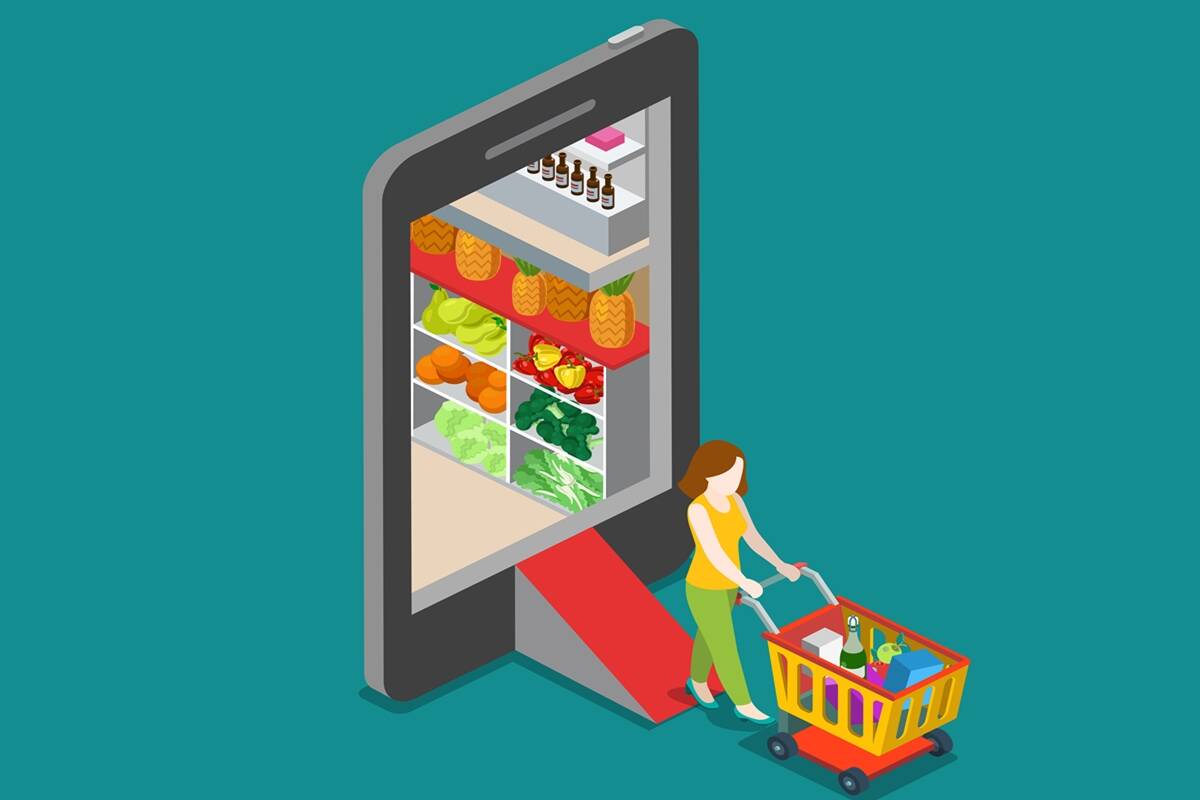In light of the Covid-19 pandemic and restrictions towards face to face transactions, delivery markets such as courier services are growing explosively due to the proliferation of online transactions. The vast “mobile shift” from offline to mobile purchasing items in sectors such as food & beverage, food delivery, and clothing/household goods leads to the growth of the online shopping market. As a result, 50-70% of customers globally have changed their purchasing patterns from offline to online.
The rapid growth of non face to face distribution and logistics following Covid-19 led to an unprecedented expansion of online e-commerce which required logistics centers globally to accelerate their efficiency and modernization.
The function and roles of logistic centers are changing due to a surge in demand, the previous traditional market structure relying on inter-company logistics (B2B) has now shifted to satisfy customer-tailored on-demand market structure. The big question is how do logistics centers keep up with the surge in demand?
Current online logistics centers require the ability to quickly deliver individual and small quantities of products ordered by customers as a core requirement, as opposed to delivering bulk products to a distribution center. While the existing logistics center’ functions are limited to loading and unloading cargo, recent logistics centers rely heavily on automation and advanced technological development for logistics facilities that are suitable for sorting and picking smaller quantity products to respond to the e-commerce and home shopping market.
What is the role of technology in this case?

Automation of logistics centers and facilities is expected and bound to happen rapidly. For example, Korean e-commerce conglomerate Coupang, which has 58% of the Korean market share, has been making large-scale investments to automate their fulfillment centers and modify their processes for online sales. Automated Guided Vehicles (AGV), a robotic automation equipment, has been introduced in their largest fulfillment center, Deokpyeong Center, which possess a mis-delivery rate of 0% (allegedly).
In the Netherlands, Albert Heijn, the largest online supermarket, fulfills orders for 86% of Dutch households from their 4 fulfillment centers. To keep up with the demand, Albert Heijn utilizes ORTEC’s advanced cloud-based routing solutions to compute optimal routing plans and personalized time slots for customers which consequently, generates monetary and environmental savings.


From the U.S, e-grocer FreshDirect in New York uses an advanced AI system to deliver 100,000 grocery orders each week. FreshDirect’s process still requires teamwork between AI and manpower, The AI robots divide orders into tasks and autonomously delegate them, they would move package orders from temperature-controlled zones into dispatch areas. The team of employees will then pack the individual orders.
What does the future hold for the logistics industry?
To keep up with the demand of e-shopping, logistics centers around the world have made technological investments to satisfy the influx of customers. The future of the logistics industry is not only contingent on the automation of its facilities, however, it is also contingent on creating a flexible system that can easily respond to changes in the production environment as well as reduce waiting and travel time.
References
https://ortec.com/en/customers/albert-heijn
https://venturebeat.com/2020/07/28/microfulfillment-startup-fabric-partners-with-freshdirect-to-launch-on-demand-delivery-in-washington-d-c/
https://www.globenewswire.com/news-release/2020/11/23/2131523/28124/en/Global-663-33-Billion-Online-Grocery-Market-to-2024-with-Potential-Impact-of-COVID-19.html
https://www.youtube.com/watch?v=kQBw7J9S47A&ab_channel=KENGICIntelligentTechnology


Hi Karina, and many thanks for your insightful blog post! It is very interesting to see the ‘back office’ take traditional, large players in the grocery retail segment are having on responding to the increased demand for online grocery shopping, with the focus in recent news being rather on how they are developing their mobile applications and building delivery capabilities. One question that might arise though is whether these investments in large, fully automated fulfillment centers are indeed the right strategic answer, given the importance of delivery speed for the segment of customers they are targeting (primarily young, tech savvy consumers, characterized by impulse buying). When competing with new, ‘q-commerce’ grocery delivery companies such as Gorillas or Glovo they might struggle, given the new players’ focus on rather building large networks of small, localized delivery centers (called ‘dark stores’), in order to maximize delivery speed and obtain a competitive advantage. It will be interesting to see how much value customers will truly put on delivery speed, particularly when the price differences for products and delivery will become apparent (it is likely that q-commerce players will have higher pricing levels in order to sustain this business model).